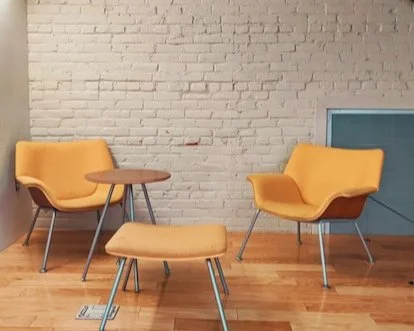Millions of people around the world experience anxiety. It can be overwhelming, manifesting in ruminating thoughts, persistent worries and fears, and even physical symptoms such as a racing heartbeat and shallow breathing. While anxiety is the most common mental health disorder, it is also the most treatable.
There are many therapeutic approaches that effectively treat and manage anxiety, but Gestalt therapy has a unique and powerful approach to combating anxious thoughts known as the Chair Technique. This technique offers a holistic approach to growth and healing by focusing on emotional expression, self-awareness, and integration.
Let’s take a closer look at the Gestalt therapy chair technique and how it can help you address the anxiety in your life and find freedom moving forward.
What is Gestalt Therapy?
Fritz Perls founded Gestalt therapy in the 1940s. This therapeutic method emphasizes awareness, presence, and focus on the here and now. A core tenet of Gestalt therapy is the concept of wholeness. Wholeness means an individual is best understood in the context of their current feelings, thoughts, and behaviors. Chairwork uses this understanding of wholeness by providing a framework for exploring and resolving inner conflicts, including those caused by anxiety.
What is the Chair Technique?
The Chair Technique begins with two empty chairs. These two chairs are positioned so they face each other and represent aspects or parts of the client’s experience. The client is invited to sit in one chair and begin a dialog with the empty chair, embodying an unresolved conflict or emotion. The client can shift between chairs to gain insight into different perspectives. In the context of anxiety, this technique allows the individual to explore conflicting thoughts, emotions, and desires that may be fueling anxious feelings. By externalizing the conflict, the client can gain a new perspective and greater self-understanding.
Externalizing Anxiety
Anxiety often stems from unresolved conflict between different parts of the self. Such internal tensions may include:
A desire for safety
Need for control
Fear of uncertainty
Longing for spontaneity
The Chair Technique allows the client to externalize these tensions, embodying them in the empty chair and speaking directly to the feelings as if they were a person sitting before them. This dialog helps the individual understand what underlying dynamics are at play and facilitates integration and resolution of that conflict.
The individual can also converse with other constructs in the empty chair. This can be an actual person, like a family member, friend, co-worker, or someone who’s passed away.
Another variation is when an empty chair is filled with something symbolic. This can include a personal goal, an inner critic, or a belief.
Finally, the chair can be filled with another part of the self that isn’t currently present. This could be the emotional side or the rational side. It’s a way to engage a suppressed part of the self that needs to be explored and integrated.
Example: Social Anxiety
Imagine a person struggling with social anxiety and using the chair technique to address this problem. In the empty chair sits the socially anxious self, while the other chair is a supportive and compassionate observer. By allowing a dialogue between these two perspectives, an individual can explore where their anxiety might stem from, challenge distorted thoughts, beliefs, or assumptions, and develop coping strategies for anxious thoughts.
Working with a Therapist
The therapist gently guides the conversation as the client engages in this dialogue with the construct in the empty chair. They help the client imagine and describe who or what is across from them in detail. After aiding the imagination, the therapist encourages the client to speak to their construct.
They may use a deepening technique when certain feelings rise to the surface. This helps the client to clarify their position and heighten the emotional intensity they are feeling. The guiding principle of chairwork is to help the client give voice to their feelings that are clear, forceful, and distinct. This allows the client to have a profound shift in their thinking and feelings, hopefully leading to a breakthrough.
After the dialogue is complete, the therapist will debrief the client to assess how the client’s perspective has changed and how they can integrate this new reality.
If you think the Gestalt Chair Technique might help you address the anxiety in your life, contact us for a free consultation. Anxiety therapy can help you find wholeness on your journey.


